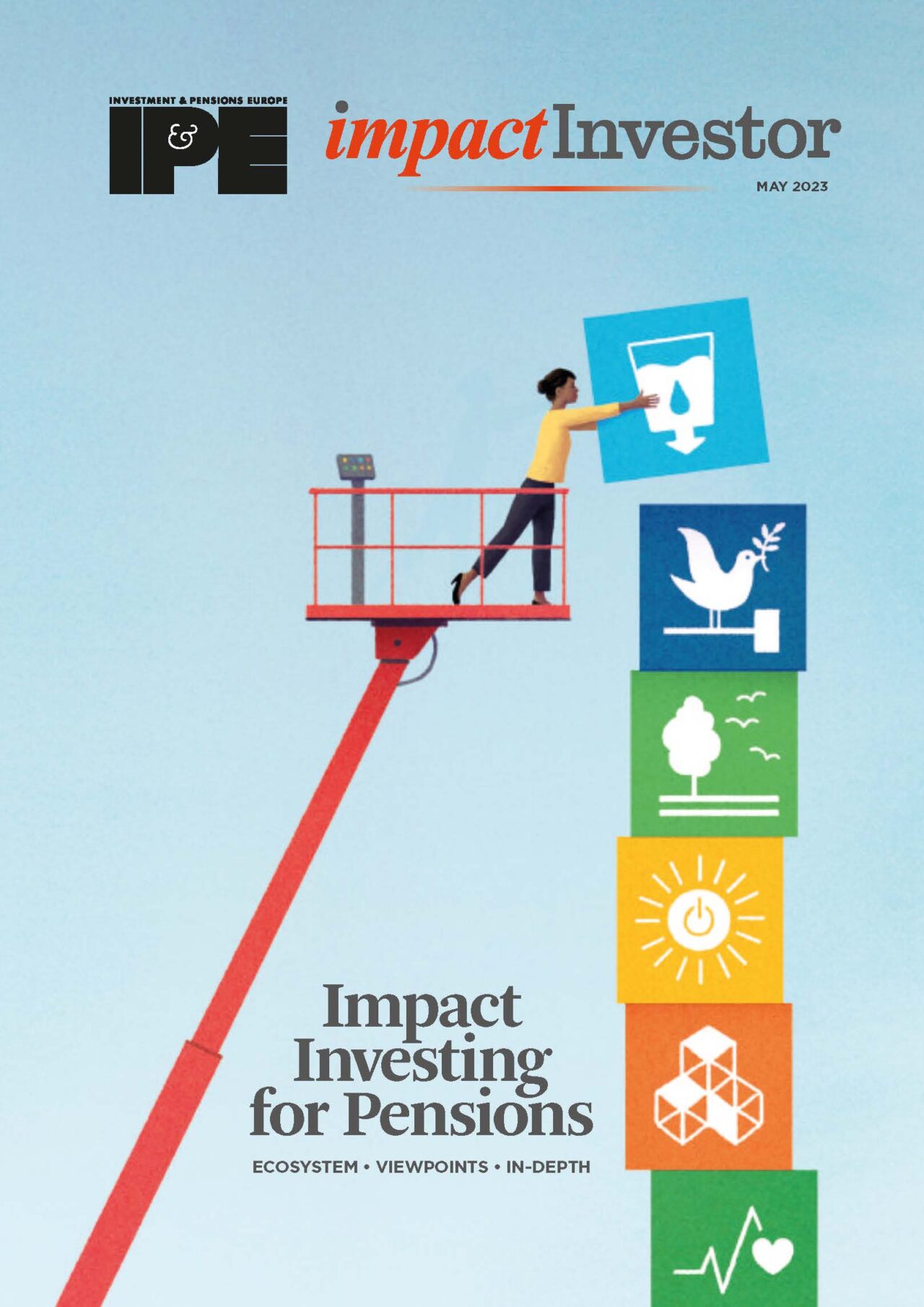We talk to the national advisory boards (NABs) for impact investing in France, Germany and Italy to find out how the landscape for pension fund investment in impact is evolving.

FRANCE: Cyrille Langendorff, French National Advisory Board, part of FAIR
The simple matter of investment size remains a barrier to entry, particular for social impact investments.
Recent strikes against the increase in the state pension age have thrown a spotlight on pensions as never before, highlighting the insufficiency of current retirement provisions to plug the country’s looming and growing pension deficit. French savers are acutely aware they will need to save for their retirement in other ways. Broadly speaking, they can top-up their state pension in two ways, through private employee savings schemes and through life insurance products.
And whilst impact investing in the state pension has been very slow, it is in these two private savings options that we have seen the needle of social impact investing move much more significantly.
The enactment of the Fabius law in 2001 saw the introduction of 90/10 funds requiring all private employee pension providers to offer one of these solidarity-based savings vehicles through their employee savings schemes. The 90/10 funds, which invest between 5 and 10% of assets in accredited ‘solidarity-based enterprises of social utility’, have proven to be extremely popular and more than 1 million French retail investors have a solidarity-based savings product in their pension portfolios today.
Fast forward to 2019, and the launch of the Pacte law, which among its various measures to promote business growth and transformation, also introduced an obligation for insurers to pro-pose one 90/10 investment fund in their life insurance contracts from January 2022. This is on top of the SRI-labelled fund and the GreenFin-labelled fund (which excludes companies in the nuclear and fossil fuel sectors), which were mandated from January 2020.
Until 2022, the market was very concentrated with relatively few insurance companies investing in impact. Research by FAIR revealed that mutuals, especially MAIF, led the charge in social impact investing, contributing significantly to the 28% growth in the impact investment market that we saw bet-ween 2020 and 2021 and which stands at more than €6n in AUM today. Nevertheless, we expect the Pacte law to give the retail market in impact investing an additional boost in years to come and more insurers to come on board.
The simple matter of investment size remains a barrier to entry, particular for social impact investments. Because of this, pension fund money has typically sought out larger real estate invest-ments, particularly those dedicated to social housing such as the Hemisphere Social Impact Fund, which provides housing for the homeless, asylum seekers and refugees across France, rather than smaller social impact bonds. Insurers, on the other hand, have tended to stick with what they know, focusing their impact investing on health, prevention or the care economy.
To attract more pension fund investment, the labelling, vetting and impact measurement of products will also need to improve. Ongoing talks in France on the SRI label have seen FIR (Forum de l’Investissement Responsible), the multi-stakeholder association which promotes responsible investment in France, leave the discussion table, criticising the new iteration of the label as falling short of the criteria needed to drive stringent responsible investment.
This national-level debate builds on discussions at a European level over the labelling of Article 8 and 9 investments, which have themselves been contentious and incited criticism. Encouragingly, the French National Assembly recently hosted a full day on impact measurement bringing together players from across the industry, so we do expect some progress on standardising impact measurement methodologies.
As these issues get ironed out and we have greater transparency, I expect pension funds to increase their commitments to impact investing and investors and savers demand increasingly ambitious social impact products in their pension fund portfolios.
GERMANY: Johannes P. Weber, Bundesinitiative Impact Investing
German pension funds are not the frontrunners when it comes to sustainable investment, let alone impact, but market signals show that this is slowly changing.
The pensions landscape in Germany is very diverse with around 135 pension funds, including private pension funds, federal government pension funds and corporate pension funds, in existence today. But it is also relatively small, with various estimates placing the German pensions market at around €190-230bn, compared to much larger markets sized in the trillions in countries such as the UK, the Netherlands or Switzerland. This is because the majority of Germans still rely, for the most part, on the state for their retirement income.
And although pension fund allocations towards sustainable investment are growing, allocations towards impact are few and far between. Impact investing remains a very niche and nascent investment segment for pension fund investors with little public visibility and a lack of transparency, which has meant that consumer awareness of where their investments are being made, has not been very high.
German investors have very entrenched behaviours and often take an ‘outside in’ perspective to sustainability, focusing on the risks of sustainable investing on financial returns. We need to encourage a change in behaviour towards an ‘inside out’ perspective that considers how better investment choices can drive sustainability as well as financial outcomes.
Another obstacle is the perception of impact investing as the domain of private equity and venture capital investments, high risk social investments and very small-scale investment strategies, which has kept discussions around impact investing off the table for many pension funds.
To overcome this hurdle, we need to grow the size and scale of the impact investment market to bring it closer to mainstream asset classes, but improving the perception and definition of impact investing and helping investors broaden their understanding of impact as a strategy which can be applied to multiple asset classes as well as different themes and sectors, is equally important.
The discussion about fiduciary duty will also need to evolve in recognition of the systemic financial risks of not investing for impact, and the very strict pension fund capital requirements, which limit investment in perceived ‘high risk’ asset classes, will need to adapt to allow for greater diversification, including investment into impact.
German pension funds are not the frontrunners when it comes to sustainable investment, let alone impact, but market signals show that this is slowly changing and their potential role in impact should not be underestimated.
As the most regulated sector in the financial services industry, if we can get pension funds to recognise that impact investing can work for them, then it can work for anyone.
As a form of patient capital, impact investing is also ideally suited to pension funds, like the recently launched plan for a ‘Generationenkapital’ (loosely translated as capital for future generations), a type of sovereign wealth fund to supplement existing federal pensions.
If we manage to move investment in this fund towards impact it will not only help to plug the expected shortfall in pension provisioning in years to come but also support the government’s strategy for a socio-ecological trans-formation of the real economy and society at large.
ITALY: Filippo Montesi, Social Impact Agenda per L’Italia (SIA)
A lot of our work around capacity building has focused on impact measurement, because we believe it will be key driver in the development of the market.
A growing number of Italian pension funds are investing for impact and we have seen both the interest and the size of allocations to impact grow in the last four years. We think this is being driven by the desire for greater diversification, a greater understanding of the sector and the significant opportunities it offers, as well as an understanding of the systemic long-term risk of investing in a less diversified pool of assets with limited or no consideration for social and environmental factors.
Many of the pension fund pioneers in impact investing in Italy have been those representing professions, such as lawyers or psychologists, and ADEPP, the Italian association of sector-specific pension funds, became a member of the Italian NAB two years ago, demonstrating a growing interest and commitment to impact strategies.
Nevertheless, most of this investment is restricted to some of the largest impact funds, such as Oltre, or to fund of funds such as those managed by Investcorp Tages or Fondo Italiano d’Investimento which are able to scale their investment allowing pension funds to better manage their liquidity risk.
Impact investment still only represents a small portion of pension fund investments and an even smaller portion of capital markets, and we will need significantly more capacity building across the whole ecosystem to grow the pipeline of assets pension funds can invest in and reduce the perceived risk of investing for impact.
Regulations at the national and European level can help to accelerate investment, as we have seen in France with laws mandating the introduction of 90/10 funds, which offer an impact investment option to members of corporate pension funds. We have had some initial discussions with the Bank of Italy and the Ministry of Economy and Finance to see if something similar could be adopted in the Italian market.
A lot of our work around capacity building has focused on impact measurement, because we believe it will be key driver in the development of the market. Practitioners need more credible data and we are working with pension funds as well as other institutional investors to improve their understanding of and capabilities in collecting impact data.
Although we do not have access to hard and fast figures, we think most of the impact investment sectors targeted by pension funds reflect the market, and with the majority of Article 9 impact funds focusing on the environment, we expect pension fund impact investments to be more weighted towards investments that target a reduction in CO2 emissions or the environment.
However, improvements are also needed across the social economy which represents a great opportunity for investing in social enterprises that provide products and services catering the social needs of people and communities. This is particularly true for the aforementioned sector-specific pensions, which in Italy target both the provision of retirement income over the long term as well as the short-term provision of welfare services for the professions they represent.
Looking ahead, we see an opportunity for greater collaboration between impact investors and more traditional asset managers of ESG portfolios to increase the scale of impact strategies available, and reduce the perceived risks associated with today’s impact market, making it more attractive to pension fund investors.
This article is part of the editorial content of the Impact Investing for Pensions report. You can download a digital copy of the report here.







